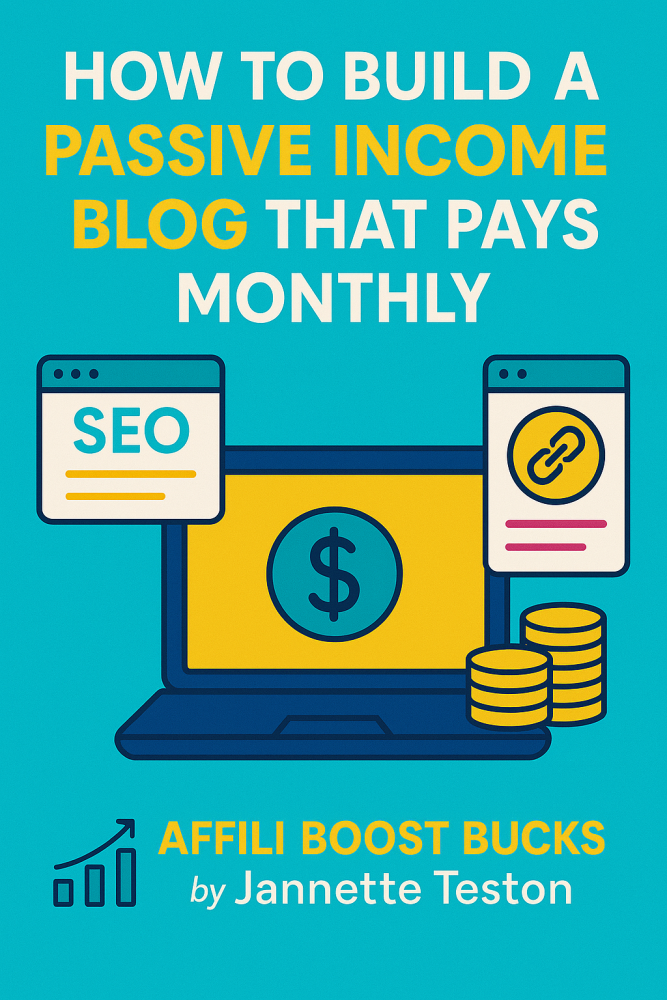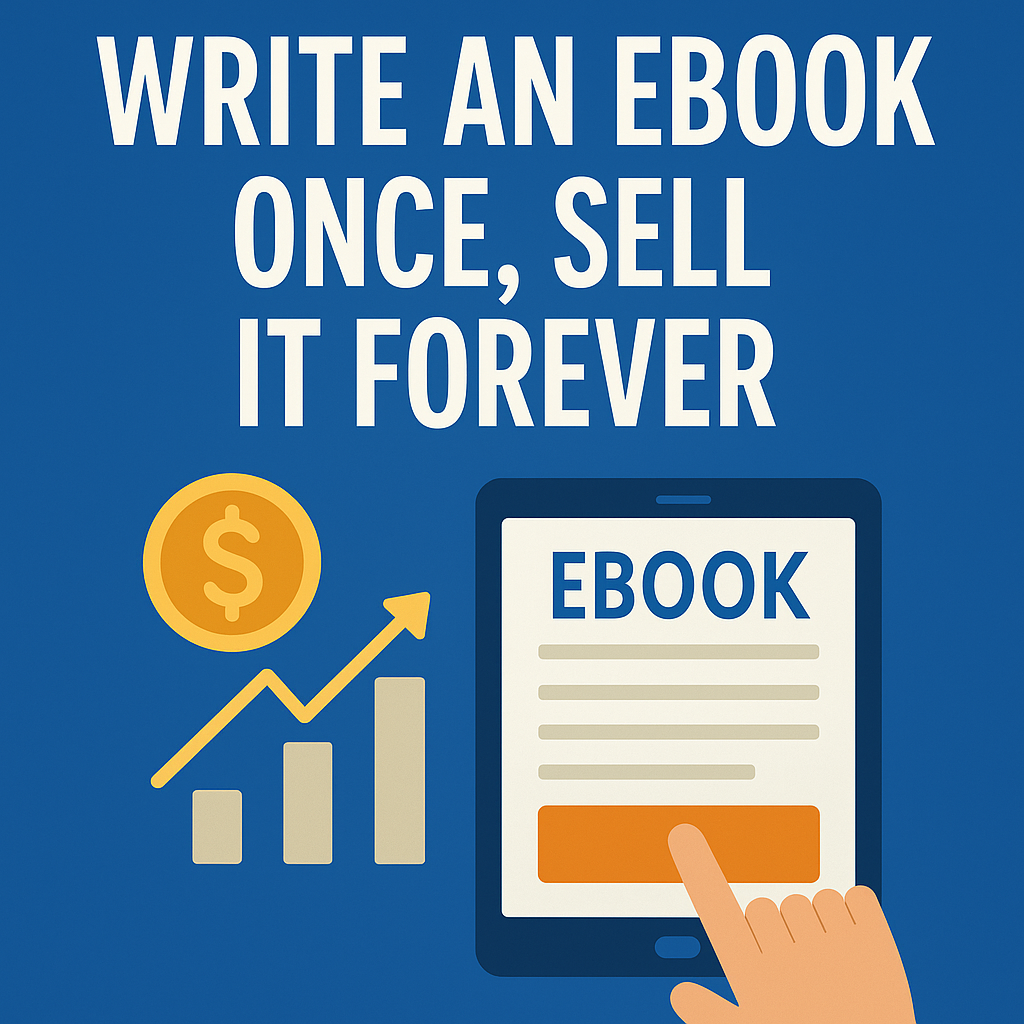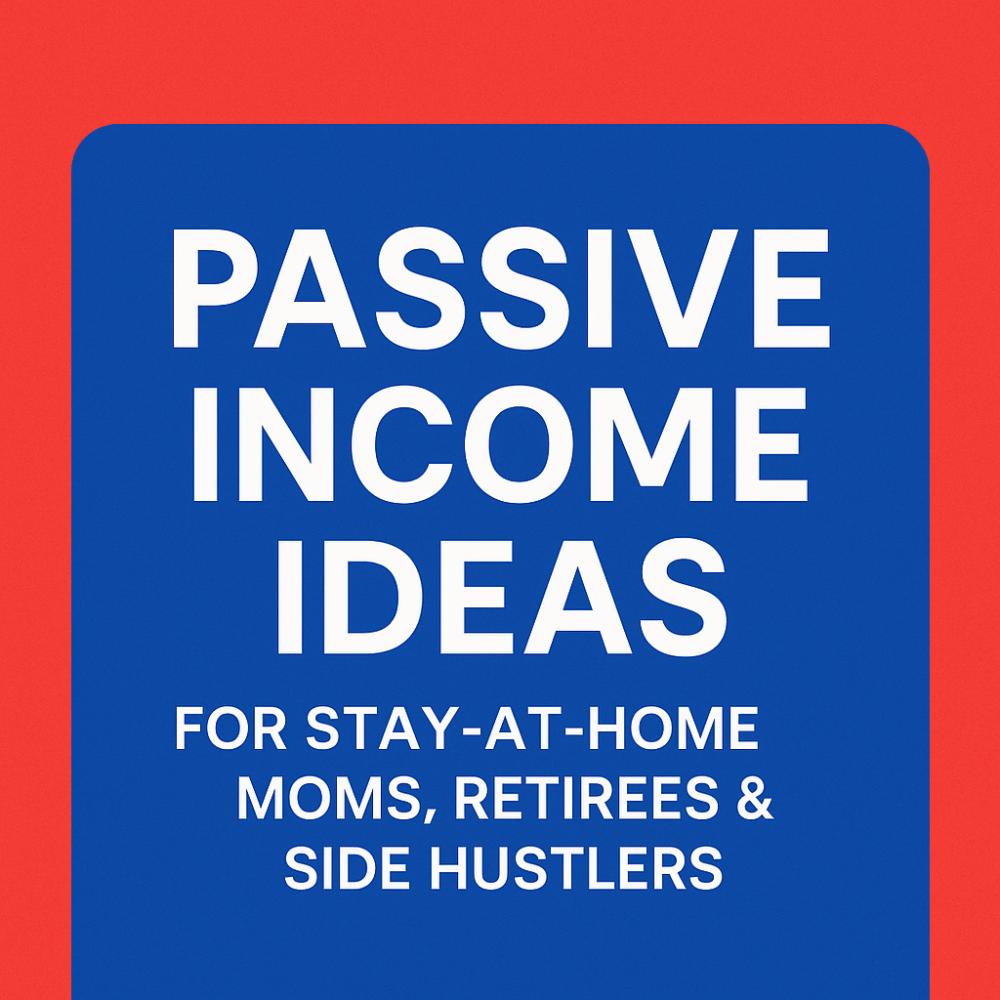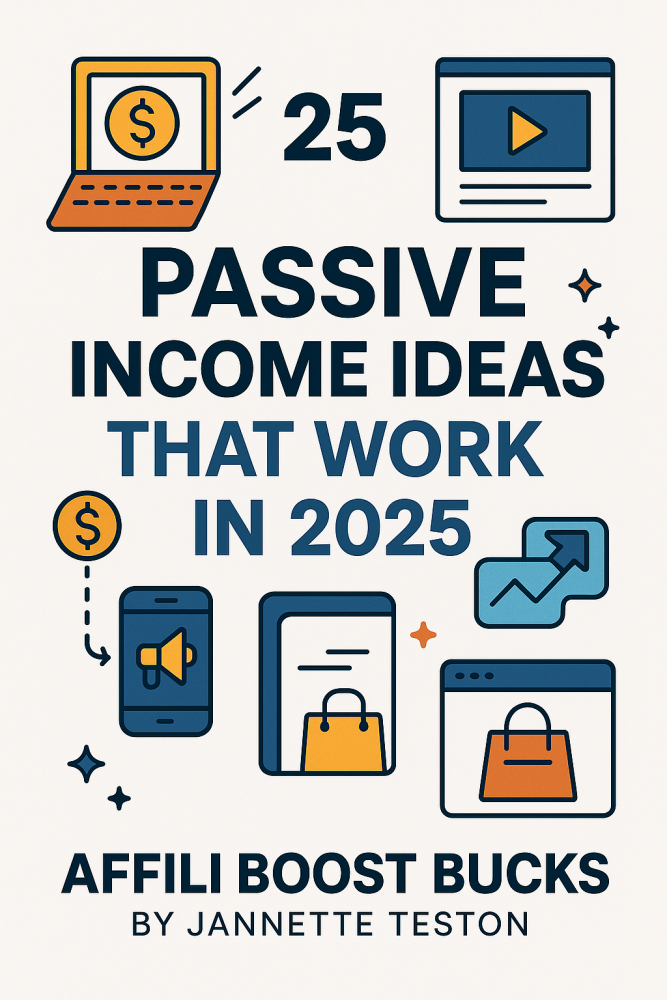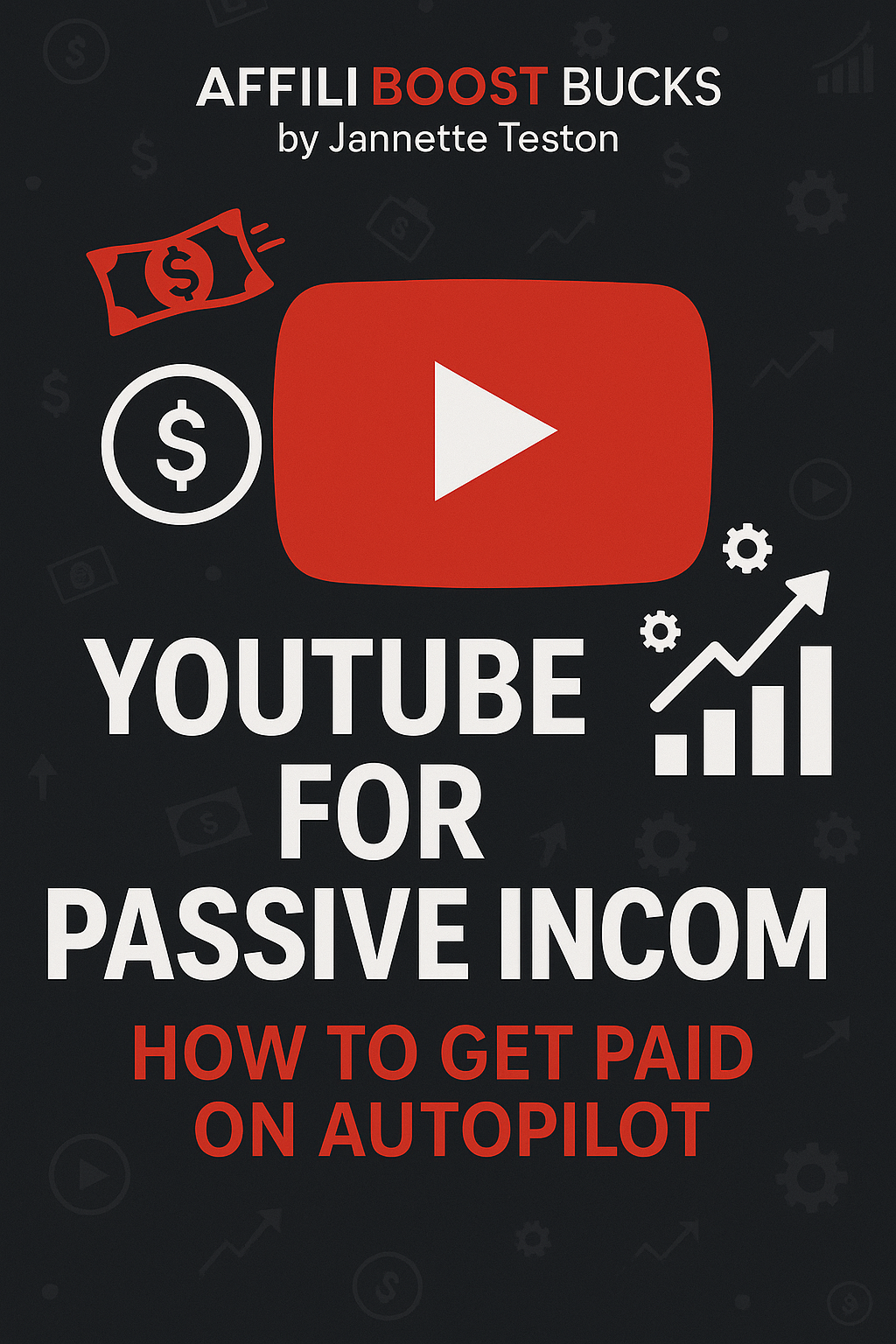 Building a passive income blog that puts money in my pocket every month has been a real game changer for me. I remember feeling overwhelmed at the beginning, not knowing what to write, where to find readers, or how to actually make money without constantly working. But with the right approach, I found that it’s totally possible to set up a blog that keeps earning, even when I step back for a while.
Building a passive income blog that puts money in my pocket every month has been a real game changer for me. I remember feeling overwhelmed at the beginning, not knowing what to write, where to find readers, or how to actually make money without constantly working. But with the right approach, I found that it’s totally possible to set up a blog that keeps earning, even when I step back for a while.
A blog like this isn’t just about posting whenever inspiration strikes. It takes a solid plan, some upfront effort, and a focus on creating useful content that keeps working in the background. By following practical steps and avoiding common mistakes along the way, I set up my own blog to earn every month from ads, affiliate links, and my own digital products. I want to share everything I’ve learned so you can do it too, even if you’re just starting out.
This guide covers everything I wish I knew when I began: from choosing a money making niche, planning your content, and driving traffic, to building income sources that pay over and over. My goal is to make this as easy to follow as possible, with specific steps and examples from my own experience. Whether you want a side hustle or dream of leaving your day job, here’s how to build a passive income blog that pays monthly. Besides, you’ll get to see how to keep your blog running with less effort as you grow.
Step 1: Choose a Niche with Earning Potential
Picking the right niche made the biggest difference in how quickly I saw my blog grow. When I first started, I wanted to write about everything I was interested in, but I learned pretty fast that focusing on a specific topic helped me attract the right readers and make money much sooner.
Questions to Help Choose Your Niche:
- What topics am I genuinely interested in writing about regularly?
- Are people searching for this topic online? (Use tools like Google Trends or Ubersuggest.)
- Are there products, services, or programs related to this topic that pay commissions?
- Do other successful bloggers or websites make money in this niche?
Popular Passive Income Blog Niches:
- Personal finance and saving money
- Health and wellness tips
- Tech reviews and tutorials
- Fitness and weight loss
- Parenting and family advice
- Home organization and improvement
- Travel hacks
I discovered that it’s really important to pick a niche where readers have ongoing problems to solve or questions to answer. That way, my blog posts keep helping people long after I write them. Picking a niche you enjoy also makes the blogging adventure more rewarding, since you’re more likely to stick with it.
Step 2: Plan Content That Brings Long-Term Traffic
Not every blog post will bring in readers and money for months or years. I found that focusing on evergreen content, posts that stay relevant, helped my blog attract more consistent traffic and passive income. I looked for topics that stay useful over time so my work keeps paying off as new readers find my site.
Types of Evergreen Blog Posts:
- How-to guides and tutorials (e.g., “How to Start a Budget”)
- Product reviews and comparisons
- Resource lists (e.g., “Best Online Tools for Remote Workers”)
- FAQ posts that answer common questions in your niche
- Step by step processes
How to Find Content Ideas That Keep Working:
- Use Google’s autocomplete or “People also ask” sections for topic ideas.
- Check forums or groups (like Reddit or Facebook) to see what people need help with.
- Look at the top posts on other blogs in your niche.
- Think about what you wish you knew when you started.
I make a list of content ideas before I even set up my blog. Having a plan keeps me from running out of things to write about and helps make sure my posts continue bringing in visitors month after month. It’s also useful to revisit these ideas over time as your understanding of your audience grows.
Step 3: Set Up Your Blog for Maximum Earning Power
The right setup can make or break how much you earn. It’s tempting to use a free platform, but I found paying for my own hosting and domain gave me more freedom to grow and make money however I want. With your own site, you can access more tools for growing your audience, selling products, and controlling your brand.
Steps to Get Your Blog Online:
- Buy a short, memorable domain name that fits your topic.
- Choose a reliable web host (I use providers like Wealthy Affiliate, SiteGround and Bluehost).
- Install WordPress, which makes managing content really easy.
- Select a simple, mobilefriendly theme.
- Add key plugins, like SEO tools (Rank Math or Yoast) and a caching plugin for faster load times.
You can read my full review of Wealthy Affiliate and get started for FREE with no credit card required to start your blog.
What to Include on Day One:
- About page to introduce yourself and your blog’s purpose
- Contact page so brands or readers can reach out
- Privacy policy and disclosures (super important for legal reasons and certain ad networks)
By setting these up first, my blog looked professional early on, which helped build trust with readers and advertisers right away. Having clear policies and easy navigation will also make visitors feel more comfortable browsing—and returning.

Step 4: Grow Traffic the Smart Way
Traffic is the lifeblood of any passive income blog. I spent a lot of time trying different traffic strategies. Some worked better than others, but here’s what helped me the most. Organic search and social media were especially useful for getting readers who were already interested in my niche.
Top Strategies for Getting Traffic:
- SEO (Search Engine Optimization): I optimize every post with relevant keywords, descriptive meta tags, and helpful images. Tools like Ubersuggest or Ahrefs help me find keywords readers actually use.
- Pinterest: For many niches, Pinterest drives a lot of blog traffic. I design simple graphics for each post and share them regularly.
- Answering Questions: Contributing on Quora or Reddit with helpful answers (linking back to my posts where it’s allowed) brings in new readers.
- Email List: I started capturing emails early so I could let subscribers know about new posts and offers.
- Repurposing Content: Turning a popular blog post into a video or a short checklist gives it new life and attracts fresh eyes.
How I Make Content Easy to Find:
- Use clear headlines and subheadings (H2, H3) in every post.
- Link between related articles within my blog.
- Make sure the blog loads fast, especially on mobile.
Once a few posts started ranking on Google or getting pins shared widely, I noticed steady traffic that didn’t require daily effort from me anymore. Investing early in SEO and sharing posts consistently helped me reach new readers around the clock, even when I was working on something else.
Step 5: Set Up Multiple Streams of Passive Income
Relying on just one income source felt risky to me, so early on, I tried different monetization methods. The more options I include, the more likely my blog keeps earning each month, even if one source slows down or changes. Over time, these income streams can stack up to create more stability and financial freedom.
Popular Income Streams for Passive Blogs:
- Display Ads: Networks like Google AdSense or Mediavine pay me based on traffic.
- Affiliate Marketing: I include links to products or services I recommend. When someone buys through my link, I earn a commission. (Examples: Amazon Associates, ShareASale, or individual brand programs.)
- Digital Products: Ebooks, printables, or online courses that readers can buy directly from my site.
- Sponsorships: Some brands pay me to include their product in a blog post, especially if I have good traffic.
- Email Marketing: I set up automated email sequences that recommend products, even when I’m not actively promoting them.
How to Keep Income Streams Passive:
- Write evergreen affiliate posts that don’t need constant updates.
- Use ad networks that handle ads for me.
- Create digital products (like checklists or planners) that sell automatically through my blog or shop.
Having several income sources means I don’t stress when one goes through a slow season. My monthly blog income feels much more stable, and the blog becomes a more reliable foundation for longterm financial growth.
Step 6: Automate and Systematize Your Blogging Tasks
To really make income passive, I try to automate or batch as many blogging tasks as possible. The goal is to set things up once and let them work in the background, so I don’t have to spend all my time managing the blog. Automating routine jobs also frees me up to focus on bigger projects or new content.
Practical Automation Tips:
- Use scheduling tools (like Buffer or Tailwind) to post on social media in advance.
- Set up autoresponders for new email subscribers that share my best content or offers.
- Batch create blog posts or graphics in one go, then schedule them for consistent publishing.
- Automate data backup and updates for WordPress with plugins.
Automating these steps saved me a lot of time and helped keep the blog growing and earning, even when life gets busy. This way, the blog keeps working for me even during vacations or busy work weeks.
Step 7: Track Results and Adjust for Better Passive Income
Once my blog started earning, I checked my analytics regularly to see what was working. Understanding which posts or offers make the most money helped me focus my efforts. Over time, I’ve found that tweaking and improving certain posts can lead to big jumps in revenue or readers.
What I Monitor Every Month:
- Which posts bring the most visitors and income
- How many email subscribers I’m gaining
- Trends in affiliate clicks and conversions
- Ad revenue by post or page
- Feedback or questions from readers (which uncover new content ideas)
If something isn’t working, I tweak headlines, add new calls to action, or update older posts. A few small changes often lead to more passive income the next month. Keeping an eye on your stats and making small improvements over time will help your blog keep growing on autopilot.
Common Questions & Troubleshooting
How long before I start earning monthly from my passive income blog?
In my case, I saw my first few dollars after about three months, mostly from affiliate links. Consistent monthly income usually took six to nine months of posting regularly and getting steady traffic. Some people get there faster, others take longer; traffic and content quality really matter. Being patient and persistent are key.
What if I can’t think of enough topics to write about?
- Answer questions from beginner forums in your niche.
- Create resource roundups or “best of” guides.
- Share your own mistakes and lessons learned.
- Review tools or apps you actually use.
Do I need to update my blog all the time?
No, once you have a solid base of evergreen content, a few updates or new posts each month are usually enough. I focus on making each post as helpful and complete as possible so they keep earning passively. Monitoring your posts and making occasional tweaks can help keep them relevant for longer.
Is it too late to start a blog and make passive income?
There’s still plenty of room to start. Picking a focused niche, adding value with each post, and being patient make a big difference. Many of the most successful blogs today started years after blogging took off. New trends and interests appear all the time, so there’s always a chance to create something valuable and build your own audience.
Starting Your Passive Income Blog: Action Steps
Setting up a blog that brings in monthly income doesn’t need to be confusing or expensive. I started small, made lots of mistakes, and learned as I went along. The key is to take action and keep moving forward. My first post wasn’t perfect, but now it’s part of a blog that pays me monthly. Consistency and a willingness to learn will take you far.
Your Blog Launch Action Plan:
- Pick a niche with proven earning potential and steady search interest.
- Map out a list of evergreen content topics and write your first 5–10 posts.
- Set up a selfhosted WordPress site with a clean design and essential plugins.
- Sign up for an ad network and a few affiliate programs to start earning early.
- Use simple automation tools to batch tasks and schedule posts in advance.
What’s one step you’ll take today to start your own passive income blog? Share your thoughts or questions below. If you want to see examples or need a topic idea, feel free to reach out, and I’ll be happy to help. Starting now brings you closer to your first month of earnings. If you’re ready, jump in and set your blog in motion!
